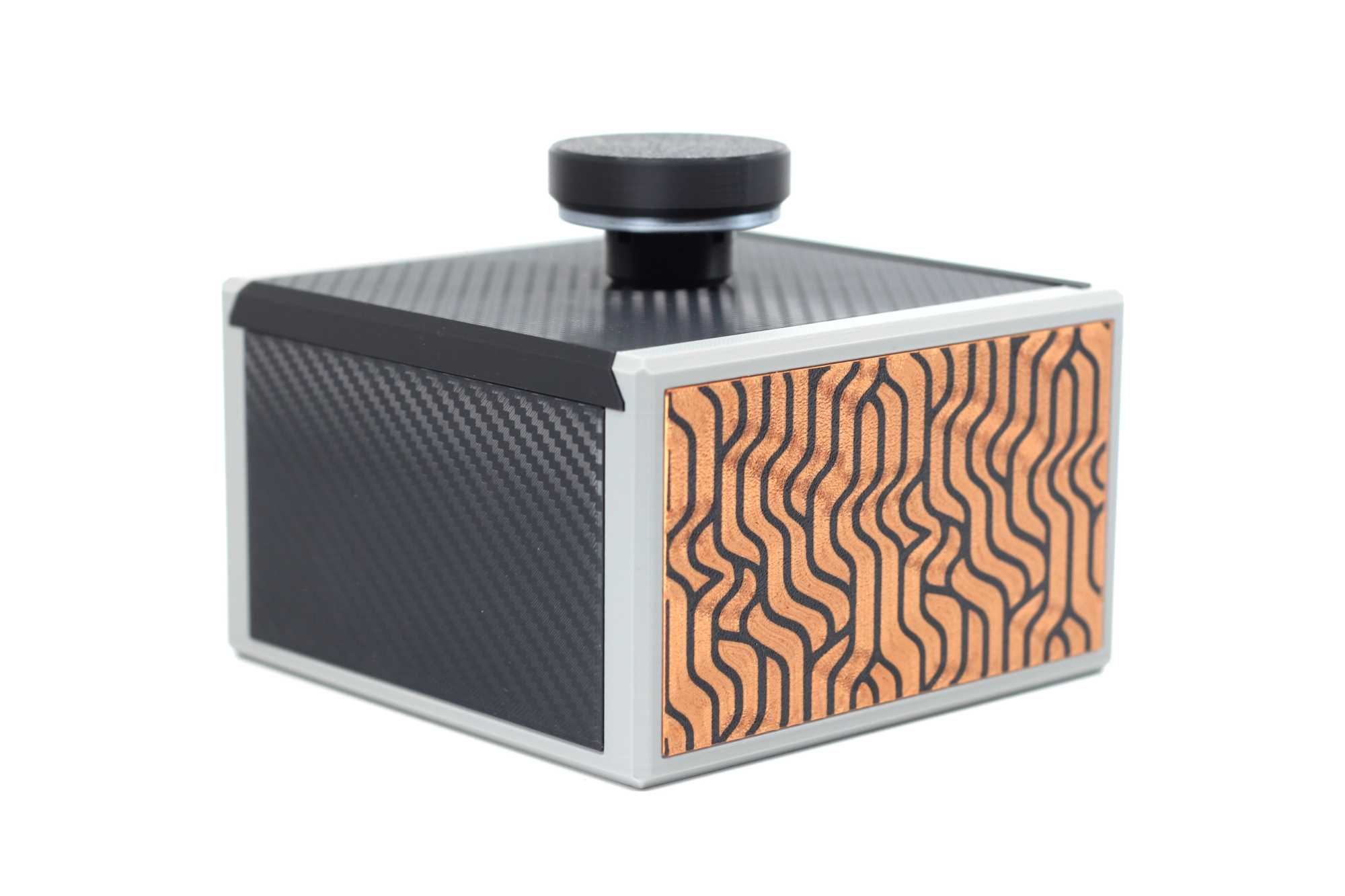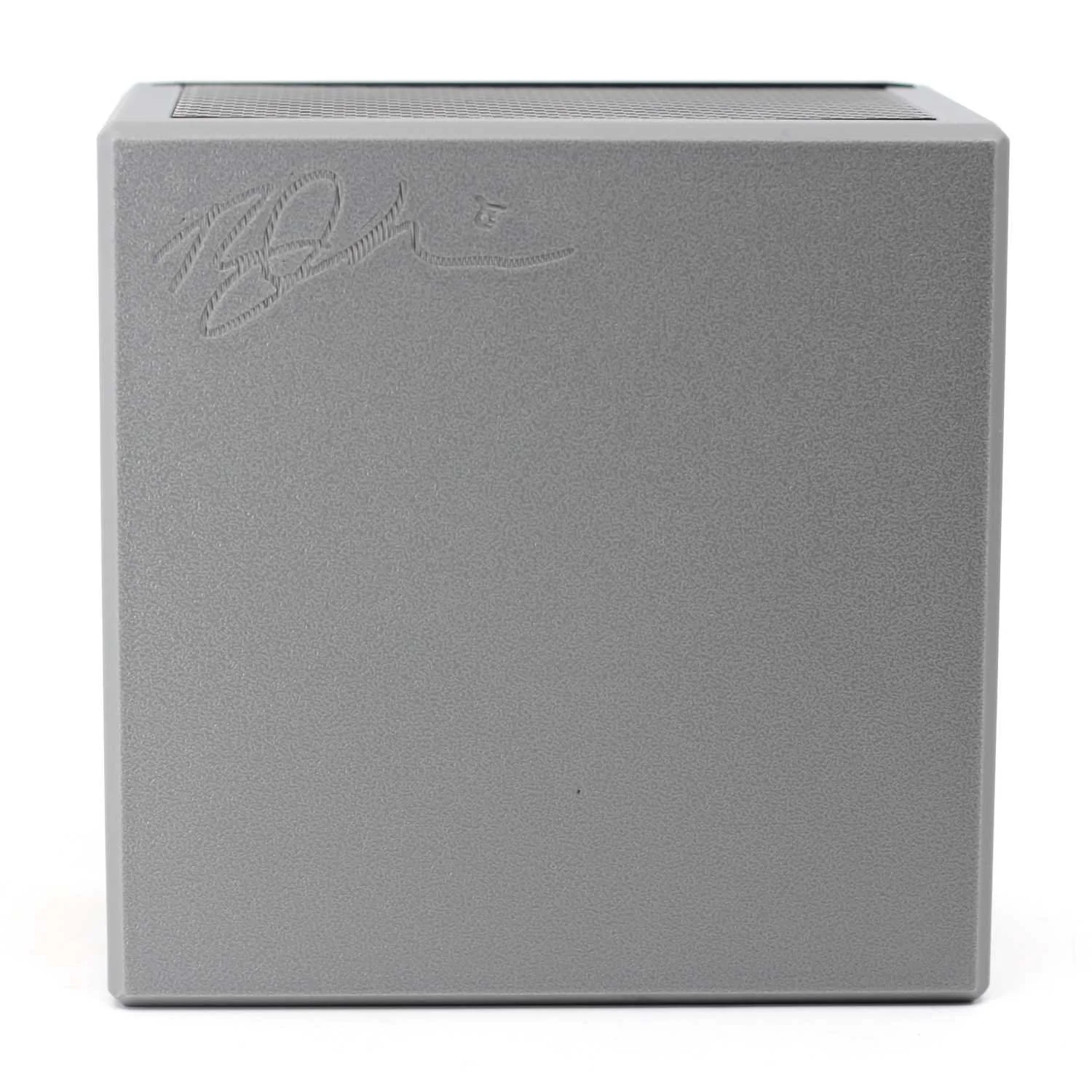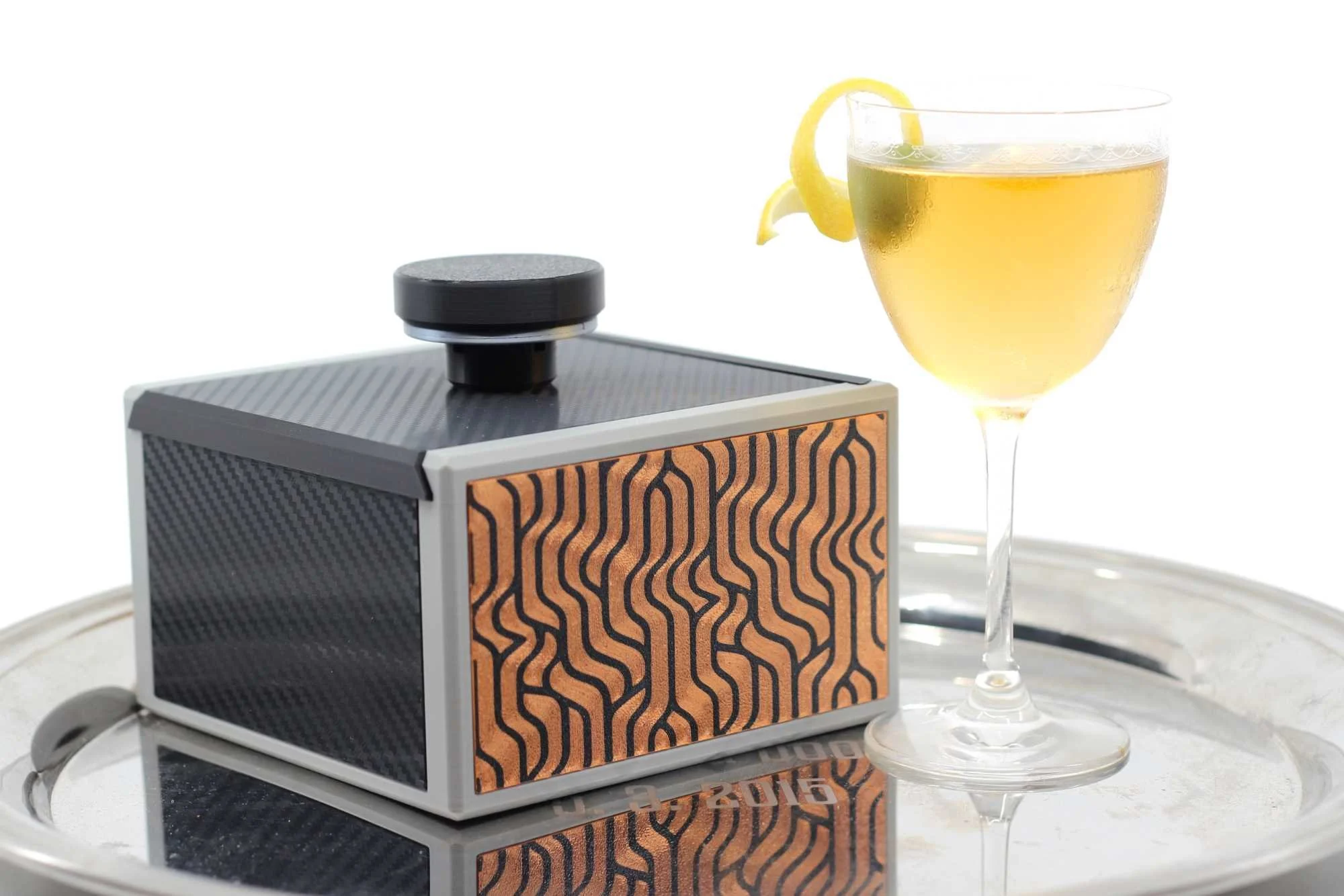Coastal Living
Coast in Case
Coast in Case by Ryan Sinatra
There was a time, once upon a time in the not too distant past, when becoming a metagrobolotegestolomixologist was merely a speculative thought experiment meant as clever wordplay. Recall that a tegestologist is an odd person who collects drinks coasters, of all things. Who would ever imagine that such a pass time could be combined with an odd person who collects puzzle boxes? Alright, just suppose, as a thought experiment, this conjunction of collections could collide. There’s no chance this odd person would also enjoy making craft cocktails, correct?
Once upon a time, in the not too distant past, UK based metalworker Felix Ure created a beautiful set of hammered metal coasters which I coveted. Felix is also a well regarded puzzle maker, and I posited to him whether he might include these coasters inside a puzzle box, something with a little trick to the retrieving of the coasters. Felix ultimately produced a perfect container, a story which has previously been told.
I’ve mentioned as well how the pandemic led many home bound creatives with time on their hands to the world of mechanical puzzles, and the online community of enthusiasts where many of these folks met and got inspired by one another. Ryan Sinatra, creator of many 3D printed puzzles including the Coast in Case (an homage to Felix Ure’s Coaster Box), shared his story.
“I'm a fairly established electronic music producer/DJ, as well as a part time barista. I went to college for graphic design, and I found my way into mechanical puzzles in late 2019. I was instantly hooked! I felt passionate about learning to design my own, and I already had been tinkering with 3D printing just because I like making things. I was interested in making puzzles as soon as I discovered them, but I knew I had a lot to learn. Almost anyone can make a puzzle, but there is so much that goes into making a puzzle actually fun. I spent some time solving and collecting before trying to design my own puzzles.”
coast with the most
Ryan mentions a few craftspeople who influence his design sense and inspiration, such as Rex Rossano Perez's, who makes challenging multilayered handheld puzzles from acrylic, and Juno, “obviously a favorite and a HUGE inspiration. He really nails the "fun" factor even if the puzzle isn't very difficult, and I love that. Some of the other community designers like Alan Lunsford and James Fortune have made some great 3D printed designs that really showed me that it was possible to make my own puzzle. The inspiration for this specific puzzle started with simply wanting to make my own 3D printed version of Coaster Box by Felix Ure - I love all of Felix's work. As soon as I started designing my own version, ideas started forming and the project took on a life of its own. Next thing you know, I had a full blown SD puzzle.”
Ryan prints the puzzle on a Bambu P1S – “It takes about a day to print the parts for one puzzle and nearly a whole roll (1kg) of filament. Some small non-3D printed parts are included too.” He made a few modifications to the initial prototype, in order to make parts stronger, avoid unintentional solutions, and make the puzzle more complex. “The original design was only a few steps. Along the way, solving a "problem" with the design also paved the way to adding new fun steps.” He describes how this happened with the initial set of moves needed to proceed, which partly mimic the Ure version but take things much further. He mentions how he added the coasters themselves into the puzzle at one point, and so on. “I could go on and on about changes that were made along the way, but the just of it is, this puzzle was created step by step and adding new features along the way until I finally decided enough was enough and called it done.” Knowing (or deciding) when a puzzle is “done” can be one of the hardest parts of designing!
coast host
Ryan relates an amusing story about the puzzle design process. “Well, all the CAD for the puzzle took place in a day or two of manic but enjoyable tinkering. Within a week I had a prototype to show a friend of mine that sometimes enjoys puzzles with me. I knew some parts were fragile and I knew some mechanisms were questionable. He instantly broke the puzzle, and that's when I knew I had to re-design some parts. I was so worried I wasn't going to be able to make it happen in plastic. I ordered some metal parts to try and construct some things out of bolts and lock nuts (mostly the handle) - I realized that wasn’t the right answer either, so now I've got a decent size box of bolts and nuts that I don't have a use for haha. Maybe a future puzzle can use them :)” We will certainly look forward to that. Ryan has some ideas for what’s next on his puzzling agenda, and plenty of new mechanisms in mind. He could combine them all into one big design, but likes how a smaller puzzle with one or two great tricks can be so satisfying. With this in mind, we may see a series of small boxes from him soon.
coast to coast
The Coast in Case is a worthy successor to the Ure original, which has one great trick and was designed with the idea that getting to the coasters was the high priority. Every aspect of Ryan’s sequel is more complicated, and just getting to the coasters feels much more victorious, to the point of feeling satisfied enough already. Yet, there’s plenty more after that to be discovered, as noted in the handy instruction card provided with the box. Coast in Case in a great challenge that will keep you guessing while keeping your furniture free of water marks! “I really hope it brings a lot of joy to everyone who gets one, and I hope it can be a great "conversation piece" on many home bars around the world.”
Coastal Martini
As fads go, drinks are as susceptible as any other trend, like fringe fashion, the Mediterranean diet and sequential discovery puzzles. In San Francisco, a martini trend that captured and capitalized on the Bay City’s coastal allure recently had a moment. Drinks featuring bay laurel, Douglas fir, ocean brine and even the fog itself have been favored on many menus. All of these “Coastal Martinis” pay homage to the godfather of brine, the dirty martini, but offer some new twist or refreshing flavor which elevates and renews the old formula in subtle or complex ways.
greetings from the coast
What better drink then to toast in place the coast in case, an homage cocktail for an homage box, with the same sort of name. Anyway, I was in the mood for a Martini. San Francisco bartender Drew Record of Chezchez builds his coastal martini variation like a Bamboo, another classic made with dry sherry and dry vermouth. He enhances the salinity of manzanilla sherry with Scandinavian aquavit, another coastal origin spirit. I leaned into a coastal gin rather than using aquavit for a more classic Martini template in my version, and used dry madeira rather than sherry, which brings a subtle sweetness to the glass. A few drops of high quality olive oil enhance the experience in this toast to the coast. Cheers!
this pair is coasting
Coastal Martini
2 oz coastal gin (such as St George Terroir or Gray Whale)
½ oz blanc vermouth
½ oz sercal Madeira
Olive oil
Stir ingredients with ice and strain into a stemmed glass. Add a few drops of olive oil to the surface. Lemon twist and green olive garnish.
explore more:








